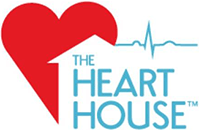Cardiac Resynchronization Therapy (CRT)
What is Cardiac Resynchronization Therapy?
Cardiac resynchronization therapy (CRT) may be recommended for individuals with moderate-severe heart failure despite optimal medical therapy. Studies have also shown that CRT can reduce hospitalizations and increase survival rates in appropriately selected patients.
CRT helps resynchronize contractions using a specialized pacemaker called a CRT device implanted under the skin of the chest. It has leads threaded through veins into the left and right ventricles. The CRT device sends precisely timed signals to stimulate both lower chambers simultaneously. By restoring synchronized contractions, CRT improves blood flow, eases strain, and alleviates common heart failure symptoms like fatigue, shortness of breath, and swelling.
Benefits of Cardiac Resynchronization Therapy
Cardiac resynchronization therapy (CRT) offers substantial benefits that often outweigh the associated risks, making it a valuable treatment option for eligible patients. While every medical procedure carries some level of risk, CRT has been shown to significantly improve the quality of life for individuals with certain heart conditions. Here's a closer look at how the benefits of CRT outweigh the risks:
- Enhanced heart function
CRT is designed to synchronize the contractions of the heart's chambers, leading to improved pumping efficiency. This synchronization can help the heart pump blood more effectively, which can alleviate symptoms of heart failure, such as shortness of breath and fatigue. - Symptom relief
Patients who undergo CRT often experience a reduction in heart failure symptoms, allowing them to engage in physical activities with greater ease and comfort. Many individuals report an improved ability to perform everyday tasks and participate in activities they previously had to avoid due to their condition. - Reduced hospitalizations
By optimizing heart function, CRT has been shown to reduce the frequency and duration of hospitalizations related to heart failure exacerbations. This not only improves patients' overall well-being but also reduces the financial burden associated with frequent hospital stays. - Extended lifespan
Studies have indicated that CRT can lead to an increase in survival rates for certain patients with heart failure. By addressing the underlying issues contributing to heart failure, CRT can potentially extend patients' lifespans and enhance their long-term prognosis. - Personalized care
The decision to undergo CRT is based on a thorough assessment of individual health factors and medical history. Cardiologists carefully evaluate whether the potential benefits outweigh the risks for each patient, ensuring that the treatment is tailored to their specific needs and circumstances. - Comprehensive monitoring
Patients who receive CRT benefit from ongoing monitoring and follow-up appointments. This proactive approach allows healthcare providers to make timely adjustments to device settings, ensuring that patients continue to experience the intended benefits of CRT over the long term.
What to Expect Before, During, and After Cardiac Resynchronization Therapy
Your cardiologist will conduct a comprehensive evaluation, including a review of your medical history and diagnostic tests. You may need to discontinue certain medications and fast before the procedure.
The procedure is performed under anesthesia in a specialized medical setting. Leads are threaded through veins and connected to a CRT device implanted under the skin. The device's functionality is tested and adjusted for optimal cardiac synchronization.
You may experience mild discomfort at the implantation site, which can be managed with pain medication. Most patients return home within a day or two, following post-procedure care instructions. Regular follow-up appointments are scheduled to monitor your progress and adjust device settings. Open communication with your healthcare provider ensures an effective recovery and improved heart function. Here are some additional things to keep in mind for CRT post-procedure:
- You must have reasonable expectations and understand that CRT is not a cure for heart failure but a treatment that can help to improve heart function and reduce symptoms.
- Your cardiologist will schedule regular follow-up appointments to check your device and make sure it is functioning properly.
- You will be given specific instructions about how much activity you can do after the procedure.
- You must find healthy ways to manage stress, such as exercise, relaxation techniques, or spending time with loved ones as stress can worsen heart failure symptoms.
Am I a Candidate for Cardiac Resynchronization Therapy?
Cardiac resynchronization therapy (CRT) can significantly improve outcomes in many cases of heart failure, though not everyone with heart failure is a suitable candidate. Studies show CRT is effective in about 70% of appropriately selected heart failure patients. Those with mild to moderate disease typically benefit the most, often experiencing enhanced heart function, exercise capacity, quality of life, and longevity.
Here are some of the factors that your doctor will consider when assessing your eligibility for CRT:
- The severity of your heart failure
CRT is typically recommended for people with moderate to severe heart failure. - The electrical conduction of your heart
CRT is most effective in people with electrical conduction abnormalities, such as left bundle branch block (LBBB). - The function of your heart
CRT aims to synchronize the contractions of your heart's chambers, so the extent of asynchrony is a critical factor. - Your symptoms
If your symptoms of heart failure are not well-controlled with medication, CRT may be considered to improve your quality of life. - Your overall health
Your doctor will also consider your overall health and any other conditions you may have.
Improve Your Heart Function with Cardiac Resynchronization Therapy
Photo Gallery
Video Gallery
Testimonials
Photo Gallery
Get To Know Our Cardiologists
In Search of Care? Request a Consultation Today





